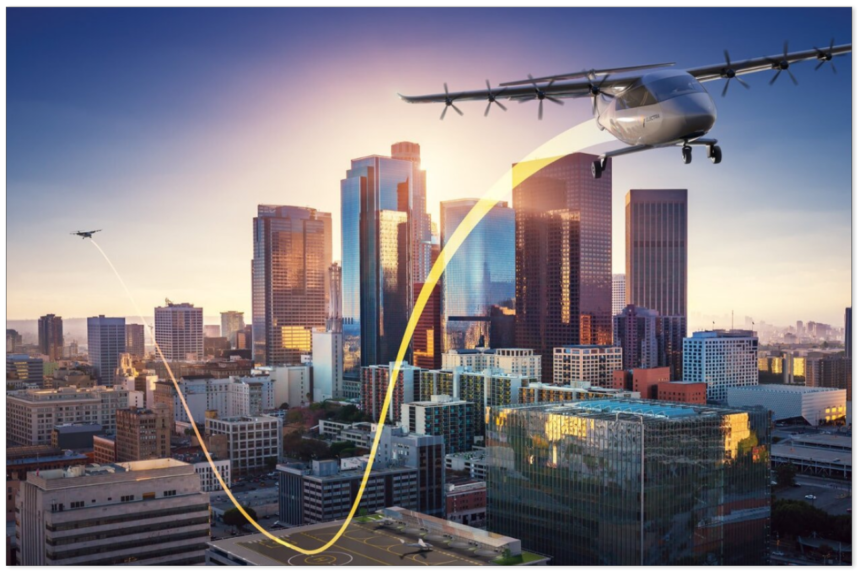Too Similar Not to Have Joined Forces The PRNewswire.com press release lauds the acquisition of Airflow.aero by Electra.aero: “Hybrid-Electric Blown-Lift eSTOL Plane Developer Electra Acquires Airflow to Create a Leader in Advanced Air Mobility.” The two companies have been developing similar multi-motor, blown-lift aircraft for the past few years. Electra’s has eight motors distributed across its wingspan, Airflow’s has 10. They both use large multi-element flaps to divert propeller thrust downwards, enabling extremely short takeoffs and landings. A Great Idea, but Better with Electric Power This is not a new concept, having been demonstrated in the 1960s by French manufacturer Breguet and American McDonnell. The 188 was a demonstrator that didn’t pick up any orders in either country. The narrator explains propeller control was a mechanical-hydraulic process and no electronics were involved. The complex system might have been a maintenance challenge airlines were unwilling to take on. Electra.aero’s hybrid-electric approach might be the answer to simpler, reliable propulsion, essential for …
Electra Attracts Customers, Investors and Landing Sites
Electra Aero has found worldwide interest in its electric ultra-short take-off and landing airplane, an eight-motor craft capable of taking off and landing across most jet-size runways. Producing such an aircraft takes great design, appropriately-designed landing sites, a well-integrated infrastructure, and financial backing for the total package. Electra Aero for the Design Powered by a hybrid generator driving four electric motors, Electra Aero’s aircraft uses “blown lift” to take off over very short distances – less than 150 feet, according to the company. Ben Marchionna, director of technology and innovation at Electra Aero, explains, “eVTOLs use electric propulsion to take off and land vertically – many of these concepts then transition from vertical flight to forward flight with a wing providing the lift once in cruise… Vertical flight requires significantly more power, resulting in an enormous payload, range, and cost penalty. eSTOLs use electric propulsion and an aerodynamic technique called blown lift to takeoff over distances as short as 100 …
Two Similar eSTOLs
Two different but very similar electric Short Take Off and Landing (eSTOL) aircraft from two different companies are making progress toward realization. Both are products of teams originally committed to electric Vertical Take Off and Landing (eVTOL) designs, so the shift to different configurations is of interest. eVTOLs are limited in range by the need to lift their entire weight on their rotors – some for the totality of the flight. eSTOLs use aerodynamics to enable longer range, and with high-lift devices, can use small fields from which to operate. Dr. Brien Seeley, head of the Sustainable Aviation Foundation, has been a long-time proponent of what he called “pocket airparks.” These neighborhood or urban sites would be contained within roughly one-block perimeters, use aircraft capable of extremely short takeoffs and landings, low noise, and quick turnarounds. Electric aircraft and their quiet operation would allow placing such airparks in more areas and could make access to air travel as common as …



